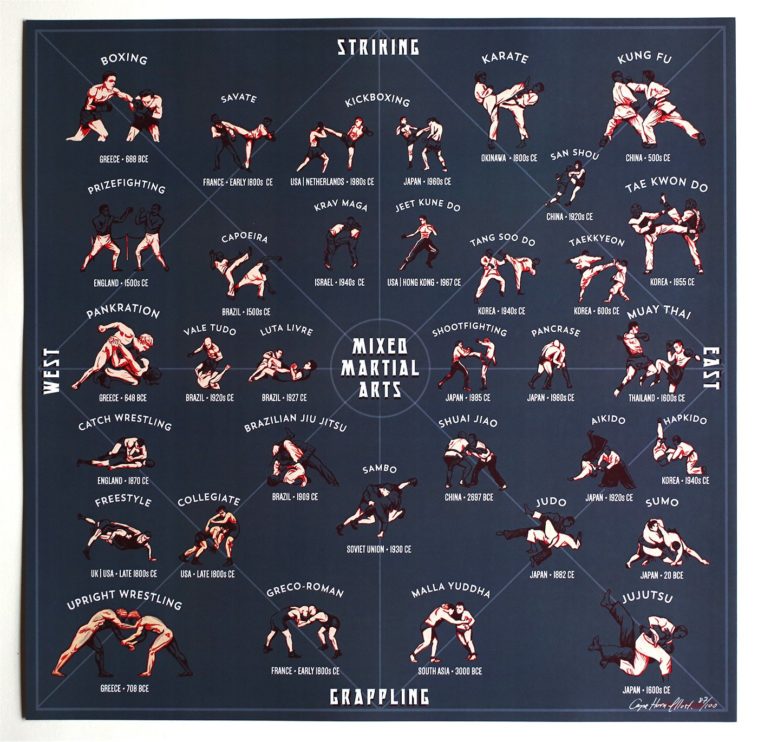Effective Fighting Style Methods For Self-Defense
Effective Fighting Style Methods For Self-Defense
Blog Article
Content Author-Kara Albrechtsen
Have you ever found yourself in a scenario where you really felt threatened and wanted you understood just how to safeguard on your own?
visit the next web site : you're walking alone in the evening when instantly, a stranger approaches you with aggressive intent. In such minutes, having a solid understanding of effective fighting styles techniques for protection can make all the difference.
But what are these methods? Which ones should you discover to ensure your security? In this conversation, we will check out a series of techniques, from strikes and kicks to joint locks and tosses, along with protective maneuvers and gets away.
By the end, you'll have a clearer understanding of the skills that can equip you to shield on your own in potentially unsafe situations.
So, let's dive in and discover the world of reliable martial arts strategies for self-defense.
Strikes and Kicks
When it concerns protection, strikes and kicks are necessary techniques that can effectively disarm an assaulter.
In a harmful situation, your ability to strike with accuracy and power can be the difference in between getting away unscathed and coming to be a victim.
Strikes entail utilizing your fists, arm joints, knees, or perhaps your head to provide powerful strikes to susceptible areas of the body, such as the nose, throat, or groin.
Kicks, on the other hand, use the strength of your legs to provide powerful strikes to a challenger's legs, torso, or head.
By incorporating correct strategy with rate and accuracy, you can rapidly disable an attacker and create an opportunity to get away.
Keep in mind to aim for susceptible locations and utilize your body's all-natural weapons to your benefit.
Joint Locks and Tosses
After grasping strikes and kicks, you can further improve your protection abilities by discovering joint locks and throws. types of martial arts are techniques that involve manipulating your opponent's joints, triggering pain or immobilization.
Throws, on the other hand, include using your challenger's momentum against them to take them to the ground.
These methods not only offer you with efficient means to control and reduce the effects of an assaulter, yet they additionally impart a sense of confidence and empowerment.
By grasping joint locks and throws, you'll be able to swiftly and successfully cripple an opponent, giving you the upper hand in any kind of self-defense circumstance.
Bear in mind, protection has to do with shielding yourself and others, and these strategies can assist you do simply that. So, why wait?
Start finding out joint locks and throws today and be gotten ready for any kind of scenario that comes your way.
Defensive Maneuvers and Escapes
To effectively safeguard yourself in an unsafe situation, it's critical to master defensive maneuvers and leaves. These methods are developed to aid you escape and conquer an attacker swiftly and successfully.
One reliable protective maneuver is the avoid. By stepping to the side, you can stay clear of an oncoming attack and develop a chance to counterattack.
An additional useful technique is the duck and cover. This involves crouching down and covering your head and crucial areas with your arms. It can shield you from strikes and permit you to evaluate the situation and strategy your following step.
Additionally, learning escapes such as wrist grabs, bear hugs, and chokeholds can help you break devoid of an assailant's understanding and produce distance.
Final thought
Worldwide of self-defense, understanding efficient fighting styles techniques is important. Whether it's the speedy strikes and powerful kicks that leave your challenger stunned, the experienced implementation of joint locks and throws that debilitate them, or the defensive maneuvers and gets away that give you liberty, these methods resemble a vibrant tapestry of security.
Like a skilled artist with a brush, you can paint a picture of security and self-confidence with every relocation you make.
